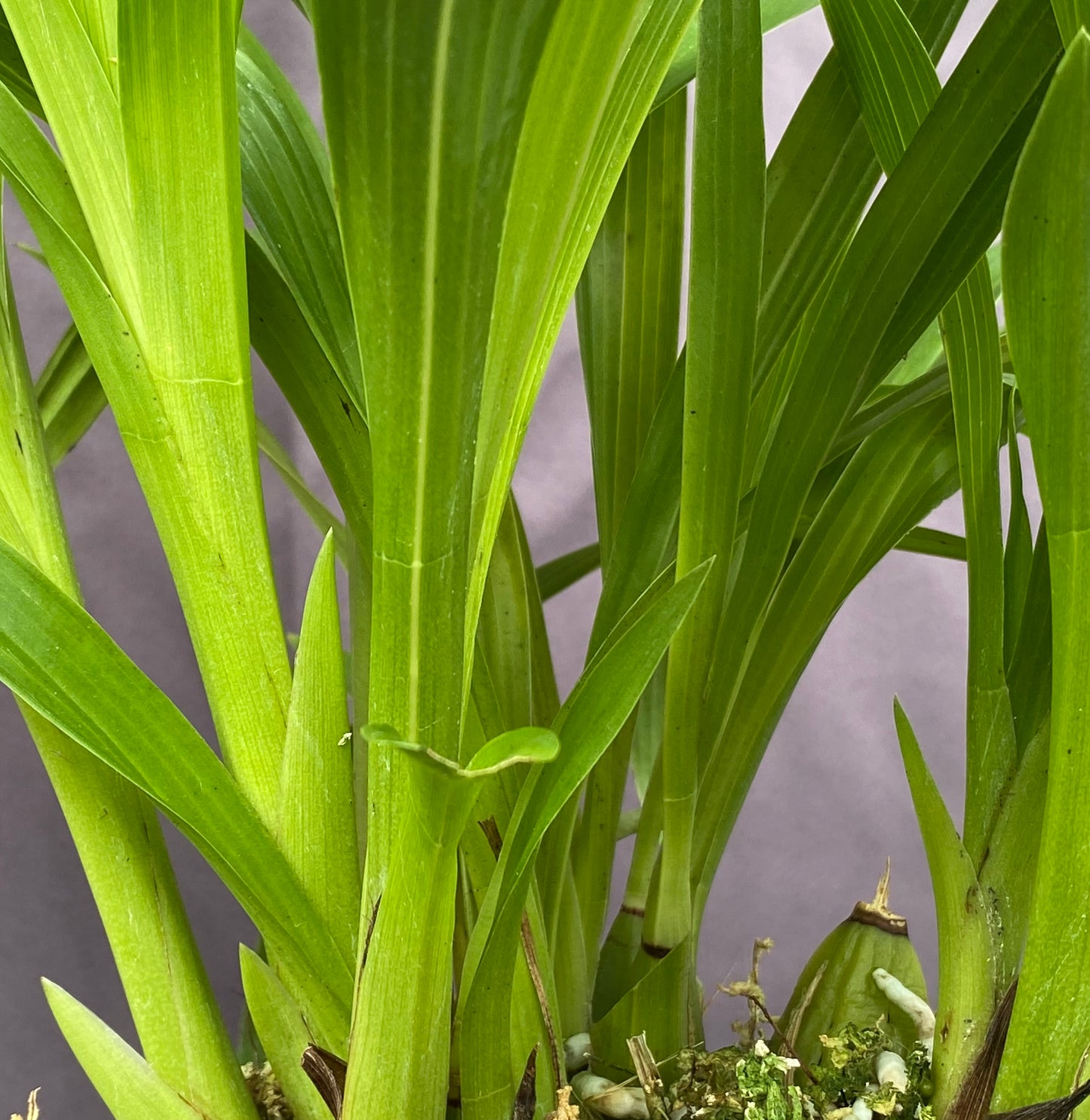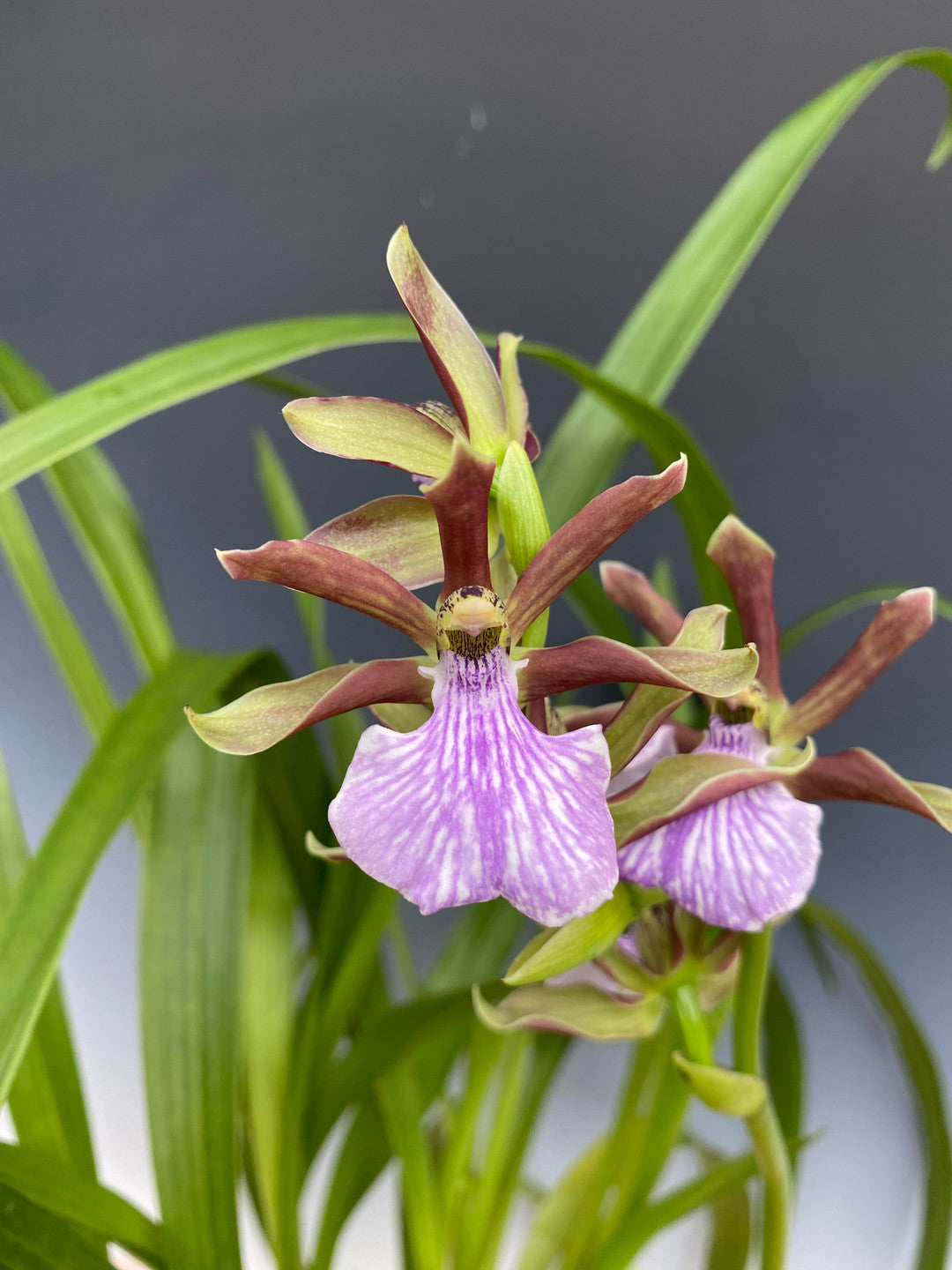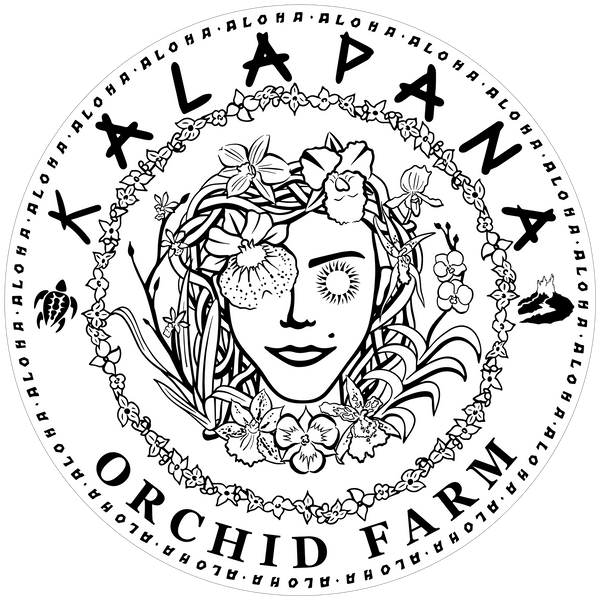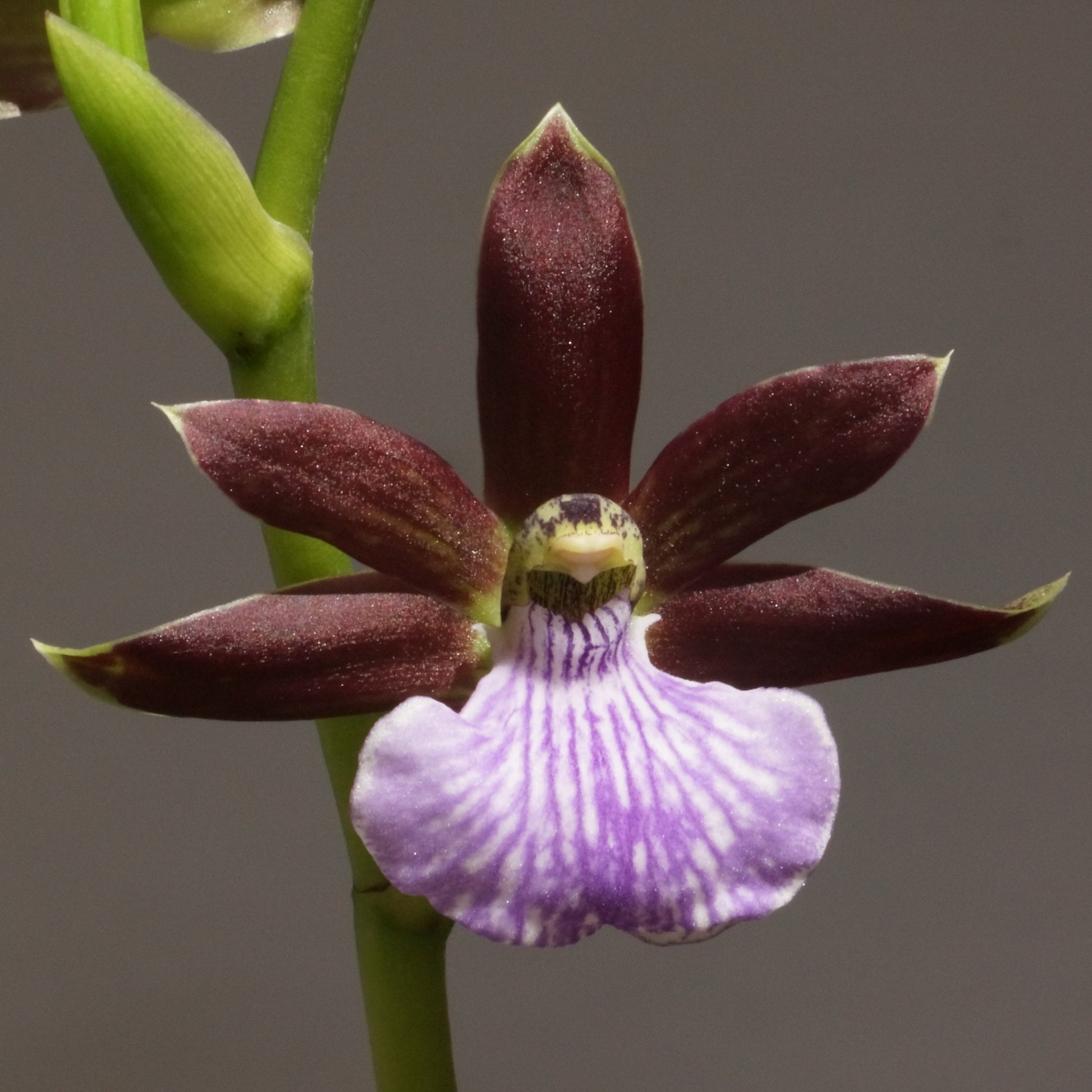Kalapana Orchid Farm
Zygopetalum triste 6"
Zygopetalum triste 6"
Couldn't load pickup availability
Zygopetalum triste is a truly fascinating species with a rather evocative name! While "triste" means sad or gloomy, there's nothing sad about this charming orchid once you get to know it. Its subdued beauty and unique characteristics make it quite a treasure.
Zygopetalum triste is a species native to southeastern Brazil, primarily found in the states of Minas Gerais and São Paulo. It typically grows as a lithophyte (on rocks) or a terrestrial, often in shaded, humid environments along streams or on mossy rocks in lower montane forests. These areas experience intermediate to cool growing conditions. You'll find it at elevations ranging from 2,000 ft. to 5,000 ft.
Botanically, Zygopetalum triste is a compact plant, typically reaching a height of 8 to 12 inches. It forms clustered, ovoid to somewhat flattened pseudobulbs, usually 1.5 to 2.5 inches tall, that are often partially obscured by scarious, non-foliage sheaths. Each pseudobulb bears 2 to 3 apical, plicate (fan-folded) leaves. These leaves are lanceolate to oblong-lanceolate, deep green, often slightly glaucous (bluish-green), and can be 6 to 10 inches long and 1 to 1.5 inches wide.
The inflorescence is where this orchid truly reveals its quiet charm. It typically emerges from the base of the newest pseudobulb, usually an erect to arching scape (flower stalk), measuring 6 to 10 inches long, bearing 2 to 6 charming flowers. Each flower is relatively small compared to some of its showier relatives, typically measuring 1.5 to 2 inches across. The sepals and petals are often a uniform, soft olive-green to a brownish-green, sometimes with subtle, darker green or brown venation, giving it a somewhat somber yet elegant appearance, hence the "triste" moniker. The lip is the standout feature: it's typically broad and rounded, often a pristine white or creamy-white background, but vibrantly marked with radiating lines and blotches of dark purple, violet, or magenta, especially towards the base. This striking contrast is what gives the flower its captivating appeal. While not known for a strong, pervasive fragrance like some other Zygopetalum species, some individuals may exhibit a faint, pleasant, earthy scent, particularly on warm mornings. Blooming typically occurs in late winter to early spring.
Care Instructions:
Light: Provide bright, indirect light. East-facing windows are often ideal. If the leaves are dark green, it suggests too little light, which can hinder flowering. Protect from direct, harsh midday sun.
Water: Maintain consistent moisture in the potting medium. Do not allow the plant to dry out completely between waterings, especially during active growth. Water thoroughly when the top inch or so of the medium feels dry to the touch. Reduce watering slightly during cooler, less active periods. Rainwater or demineralized water is recommended.
Temperature: This species prefers intermediate to cool conditions. Ideal daytime temperatures range from 65 to 75°F. Nighttime temperatures should drop to 50 to 60°F. A distinct day-night temperature differential is beneficial for inducing blooms.
Currently available in 6" pots, blooming size only (no buds or spikes).
Humidity: Aim for moderate to high humidity, ideally between 60% and 80%. Good air circulation is paramount, especially in higher humidity, to prevent fungal issues.
Potting Medium: A well-draining, moisture-retentive medium is best for this terrestrial/lithophytic orchid. A mix of fine to medium fir bark, perlite, and a small amount of sphagnum moss, or a terrestrial orchid mix, is suitable. Repot when new root growth emerges, typically every 1 to 2 years, or when the medium begins to break down.
Fertilizer: During periods of active growth (new pseudobulb and root development), fertilize every other watering with a balanced orchid fertilizer at half to quarter strength. Reduce or cease fertilizing during the cooler, less active months. Flush the pot with plain water monthly to prevent mineral salt buildup.
Currently offered in 6" pots, mostly blooming size, although some are starting to spike! These are large plants with gorgeous foliage that will make lovely houseplants while you await the bloom time.
Share










